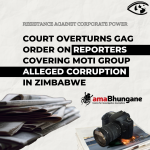EUROPE: Spain Sets Up 'Bad Bank' to Buy Toxic Real Estate
Spain will inject emergency capital into the country's biggest ailing bank, Bankia, as it puts into place reforms to allow loss-making banks to receive eurozone bailout money.
The move came after Bankia admitted losing more than â¬4bn (£3.168bn) in the first half year and as the conservative government of prime minister Mariano Rajoy delayed a decision on losses to be absorbed by small investors in bailed out banks.
The Fund for the Orderly Bank Restructuring (Frob) said Bankia's restructuring plan should be ready by October, allowing eurozone rescue money to arrive in November. "While the restructuring process is completed, the Frob intends to inject capital shortly," it said. This would be an advance on the eurozone money.
The Spanish government passed an ambitious banking law on Friday pledging once more that this would be the definitive shakeup for its finance sector that needs up to a â¬100bn (£80bn) bailout.
"This brings reform of the finance system to its crowning point," the deputy prime minister, Soraya Saenz de SantamarÃa, said as the government presented its third reform in six months.
A so-called "bad bank" will swallow large amounts of the toxic real estate that has brought down several Spanish banks and threatens several more. The property is left over from the housing construction bubble that burst in 2008, just as the credit crunch happened, and which lies at the root of Spain's double-dip recession and 25% unemployment.
The bad bank will receive building plots, unfinished developments and possibly tens of thousands of unsold homes from developers who went bust or are struggling to repay loans. It will be expected to sell this stock at a profit over the next 10 to 15 years. "It will be viable and will not post losses," the finance minister, Luis de Guindos, said.
The creation of the bad bank - which the government hoped would be mostly privately financed - was one of the demands made by the eurozone countries providing the â¬100bn loan facility to Spain's banks.
The law also creates a process for breaking up and winding down banks, while ensuring that small savers who invested widely in risky preference shares in banks would bear some of the losses when they are bailed out.
The decision to use the Frob to inject capital into Bankia rather than an emergency facility set aside by the eurozone rescue fund, came as the finance ministry failed to give full details of what losses would be born by shareholders and small investors who bought hybrid preference shares in banks that receive eurozone money. Those losses may now not be made public until after regional elections in Galicia and the Basque country in October.
De Guindos did not say what price the bad bank would pay for toxic assets, but promised a transparent system. This should be in place by December.
"The reform is a step in the right direction, but there is still much to do," said Carlos Vergara, of the IESE business school, pointing to doubts about the price the bad bank will pay for toxic assets and the names of those banks that are not considered viable.
"The key is at what price these assets are bought," agreed Jordi Fabregat of the Esade business school. "If it is too high, then the Spanish people will end up paying for it."
De Guindos said the two rounds of provisioning ordered earlier this year should ease the process of setting a price as some of the worst assets, such as building land, are now provisioned at 80%.
Spain's banks have an estimated â¬184bn in toxic real-estate loans and investments, but only some will go to the bad bank.
The law also raised core capital requirements - the level of high-quality assets banks must to hold to protect them against economic shocks - to 9%.
With the economy shrinking at 1.3% a year, Spain is struggling to convince markets it can avoid a full government bailout.
Money continues to leave the country, with the Bank of Spain reporting on Friday a net capital outflow for the first six months of 2012 of â¬220bn, against a â¬22bn inflow for the same period last year.
Spanish bond yields crept up to 6.9% on Friday, just below the 7% level seen as unsustainable for sovereign borrowing costs. The crisis in Spain's regional governments was also underlined when credit agency S&P cut debt-ridden Catalonia's rating to junk.
- 185 Corruption



